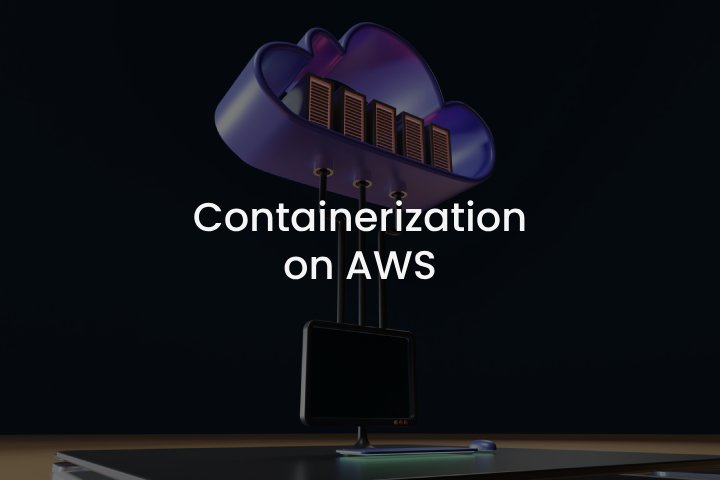
Containerization on AWS: ECS vs. EKS for Microservices Architecture
The reason why microservice architecture has gained such popularity is simple: it allows software development teams to create scalable and independently deployed applications.
Among the most frequently used services for microservice architecture are the ones by Amazon Web Services (AWS). AWS provides two main container orchestration services: Elastic Container Service (ECS) and Elastic Kubernetes Service (EKS). Both of them focus on different needs and preferences within a microservices architecture.
This article outlines the key differences between ECS and EKS, their advantages, and what decision-makers are recommended to consider when choosing a container orchestration platform for their microservices development.
The difference between ECS and EKS
Before we get down to analyzing the differences between ECS and EKS, let’s quickly review what these services are.
So, Amazon Elastic Container Service (ECS) is a container orchestration service that enhances the deployment, scaling, and management processes of containerized applications. ECS uses its own orchestration engine, protecting users from the challenges of infrastructure management.
Amazon Elastic Kubernetes Service (EKS) is a service for deploying and running Kubernetes clusters on AWS. Kubernetes is known for its flexibility and extensive set of features. EKS provides a managed Kubernetes control plane, allowing users to take advantage of the Kubernetes features while offloading infrastructure management to AWS.
The major difference between ECS and EKS lies in their orchestration engines. ECS utilizes custom technology, offering an advanced and user-friendly experience, while EKS uses Kubernetes which provides a highly customizable environment.
Now we discuss the specific features of each service.
Scaling
ECS scales containerized applications by adjusting resources for running tasks where it is necessary. With AWS Fargate, a serverless launch type for ECS, scaling becomes even simpler. Fargate automatically provisions and manages infrastructure based on container needs, minimizing the need for manual infrastructure management.
EKS provides scalability owing to the core features of Kubernetes. Horizontal Pod Autoscaler (HPA) in Kubernetes automatically scales deployments based on defined metrics (CPU usage, memory consumption), ensuring optimal resource utilization. Additionally, Kubernetes offers features like replica sets and deployments that facilitate scaling individual microservices or entire applications with greater granularity.
Management Complexity
ECS is designed with simplicity in mind. It manages the underlying infrastructure, allowing users to focus on deploying and managing containerized applications. This reduces operational overhead and makes ECS a compelling choice for teams with limited Kubernetes experience.
EKS inherits the complexity of Kubernetes. Managing a Kubernetes cluster is possible when knowing Kubernetes components like deployments, pods, and services. This complexity can become a learning curve for beginners but offers greater control and flexibility for experienced users.
Integration
ECS has a really tight integration with other AWS services. ECS tasks can easily integrate with services like Amazon Load Balancers (ALB) and Amazon Route 53 for traffic management, perfectly fitting within existing AWS infrastructure.
EKS offers flexibility in service integration. While not as tightly woven into the AWS ecosystem as ECS, EKS allows for integration with various AWS services through Kubernetes operators and custom configurations. This approach provides greater flexibility but also might require additional time and effort for integration.
To make the right decision, it is advisable to consider all the pros and cons of both services. While ESC’s advantages lie in a simple, user-friendly interface, tight integration with AWS services, and serverless option with AWS Fargate, it offers less customization compared to EKS and limited scalability options beyond Fargate. With EKS, it is highly customizable, utilizes the features of Kubernetes, and has superior scalability potential. On the other hand, EKS has an increased management complexity and requires Kubernetes expertise, and broader integration effort with other AWS services.
The final choice between ECS and EKS totally depends on your specific needs and priorities. To make an informed decision, we recommend addressing the following points:
- If your team lacks Kubernetes experience, ECS might be a more suitable option.
- For easier integration with existing AWS infrastructure, ECS simplifies the deployment process.
- If your team is already familiar with Kubernetes, leveraging EKS could be more efficient.
Also, both services offer a large set of security features. ECS leverages IAM roles for container authentication and authorization, while EKS inherits the security features of Kubernetes, including role-based access control (RBAC). However, the additional control offered by Kubernetes in EKS might be beneficial for security-sensitive deployments.
Secondly, both services integrate with AWS CloudWatch for monitoring and logging the applications. However, the broader ecosystem of tools available for Kubernetes allows for more granular monitoring and logging options with EKS.
Thirdly, pricing models are slightly different. The ECS price model mainly consists of the compute and storage resources the containers utilize. Fargate can be cost-effective for unpredictable workloads, but on-demand EC2 instances with ECS might be cheaper for sustained workloads. The EKS price includes a managed Kubernetes control plane in addition to the computing and storage costs. When your deployment budget is strictly limited, we recommend conducting thorough research on pricing and resources included in the price.
Summary
Regarding the final decision between ECS and EKS, we recommend analyzing your organization’s needs. After that, you learn the main advantages and disadvantages of each service and what of them apply to these needs. Then you can make an informed decision that best suits you. Whatever your choice is, both services are great for deploying and managing containerized applications, allowing you to focus on building and delivering advanced software solutions.
If you have any additional questions on the topic, feel free to contact us. Our experts can walk you through the details of AWS’s scope and help you make the best decision for your business when adopting the services into your organization’s structure.


